HAGLUND’S DEFORMITY
Posted October 22, 2021 in Haglund Deformity
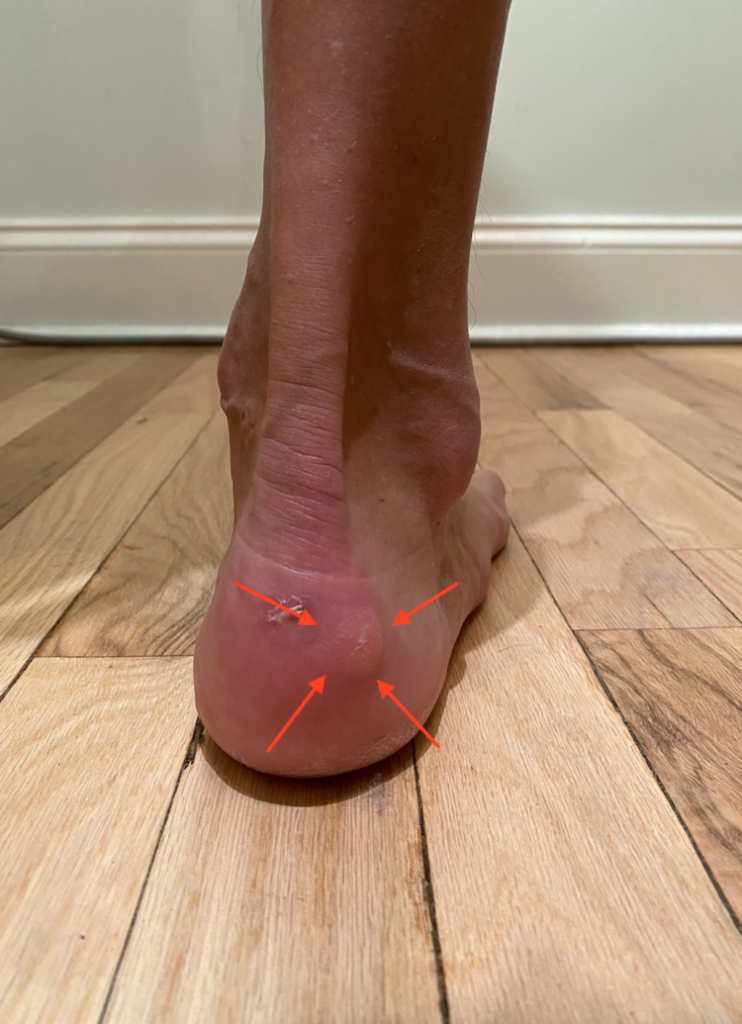
Pump Bump. Also called a Haglund Deformity, a pump bump is a bony enlargement on the back of the heel bone. Soft tissue near the Achilles tendon can get “sandwiched” between your shoe and the bony enlargement causing heel pain. Repetitive friction can lead blistering, sores, and painful bursitis, which is inflammation of a fluid filled sac between the Achilles tendon and bone. The name pump bump comes from the rigid backs of high heel shoes (pumps) that were traditionally though to be the cause of Haglund deformities. We now know it’s not quite that simple. In fact, any shoes with a rigid back can cause irritation around the Achilles Tendon. There may also be a genetic component; inherited features such as high arches, tight Achilles, and tendency to walk on the outside of the heel may make you prone to a pump bump. X-rays are done on site and typically needed to assess the extent of the Haglund deformity. Non surgical treatments include: shoe modification, heel pads, heel lifts, custom orthotics (custom insoles), physical therapy or immobilization. Surgical treatment is quick and involves removing the bony enlargement. Is your pump bump bothering you? Give Dr. Collins a call at 646-929-4149.
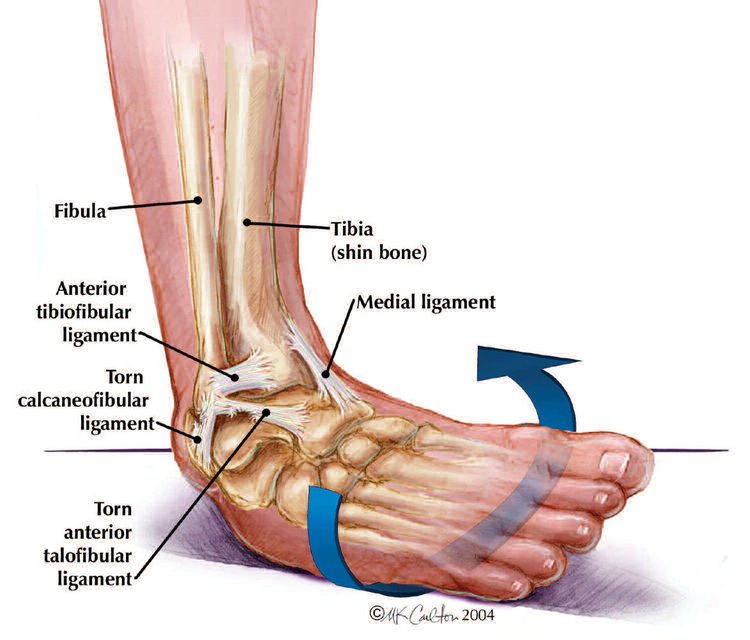
Ankle Sprain. An ankle sprain occurs when one or more of the ankle ligaments are injured. A ligament is a tight rubber band-like structure that connects one bone to another. They are important in stabilizing joints all over the body. The most common type of ankle sprain is an inversion ankle sprain when the foot twists inward, stretching the lateral ankle ligaments. Many people describe it as rolling their ankle. Ankle sprains can occur from walking on uneven surfaces, wearing unstable shoes, playing sports, or having weak ankles from ankle previous sprains. Symptoms vary (pain with range of motion, pain with walking, swelling, bruising) and depend on the severity of the ankle sprain. Even if there is no pain or swelling, seeking medication attention is important; a neglected ankle sprain may lead to other ankle or foot issues if not properly diagnosed and treated. Luckily, most ankle sprains.
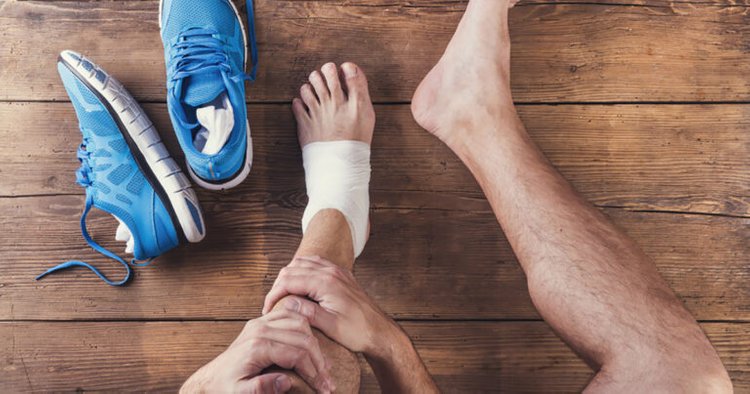
Running Injuries. Runners are susceptible to a host of foot and ankle injuries. Whether you are a recreational runner or an elite ultra-marathoner, no one is immune. Foot and ankle health is paramount for optimal performance and achieving your personal best. Identifying and addressing common foot and ankle symptoms early can prevent more serious injuries later. While we all get minor aches and pains, when the symptoms linger, it’s time for intervention. Pain, stiffness, instability, swelling, and/or unusual popping and snapping should be addressed by a board-certified foot and ankle specialist. As a podiatrist, Dr. Collins can answer all your foot and ankle related questions. Give us a call at 646-929-4149.
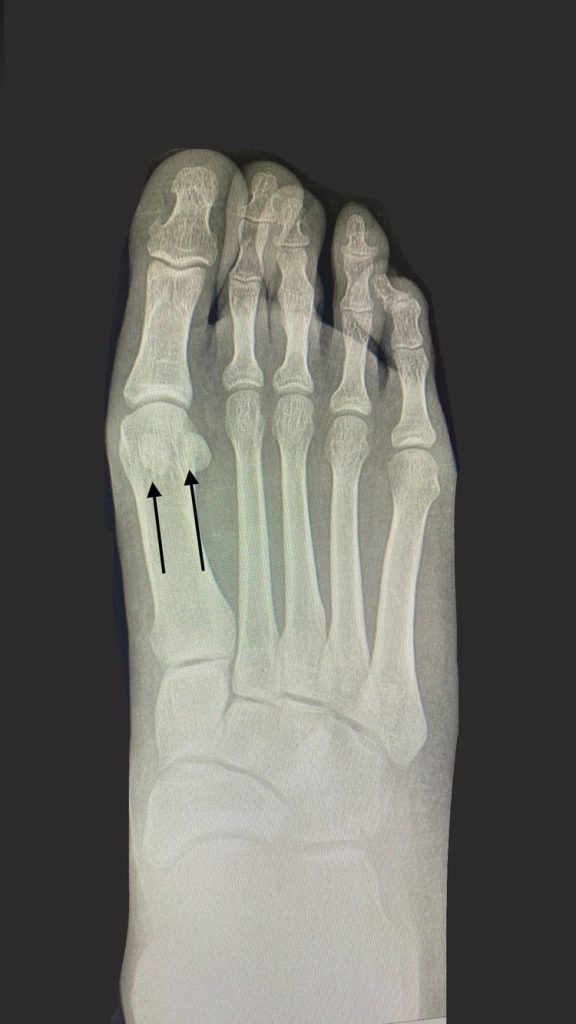
Sesamoid Injuries. Whenever I take x-rays of the foot in the office, I frequently get asked “what are those two pea-shaped bones?”. Sesamoids! Sesamoids are small bones embedded in tendons and are found throughout the body. Sesamoids act like a pulley and help move the big toe when walking or running; they are also important in shock absorption. Sesamoid injuries are often associated with increased pressure on the ball of the foot: wearing high heels, runners, having high arches, and much more. Diagnosis is usually made after an examination and imaging such as x-ray or MRI, depending on the mechanism of injury. Treatment options range from padding, to physical therapy, to immobilization. Surgery is needed in rare cases of persistent pain or if the bone is no longer viable. To discuss your sesamoid injury, give Dr. Collins a call at 646-929-4149.
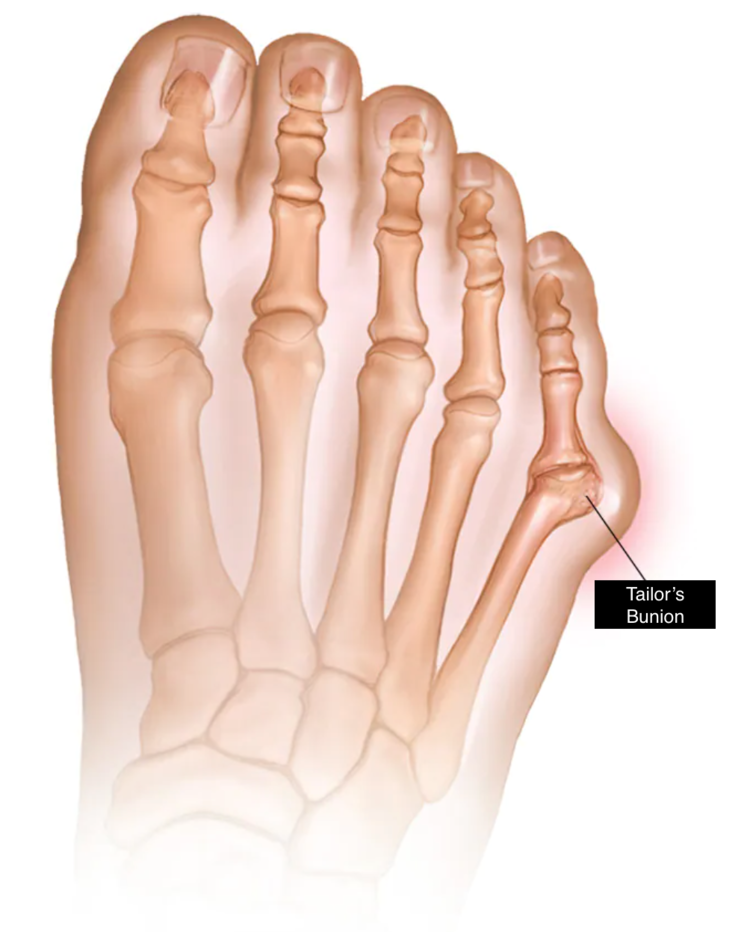
Tailor’s Bunion. You’ve heard of bunions, but have you heard of a Tailor’s bunion? Also known as a bunionette, a Tailor’s bunion is a bony bump that occur at the fifth metatarsal head. If you have a bump on the side of the foot where the foot meets the pinky toe, you might have a Tailor’s bunion! Tailor’s bunions are usually a result of abnormal architecture in the foot. It might sound alarming, but it is very common. Symptoms include redness, pain and swelling at the bump, usually exacerbated by tight shoes. Diagnoses is made by physical examination and x-rays. Treatment is typically non-surgical such as a shoe modification, padding and custom insoles. Surgery is needed is some cases, but the recovery is typically pretty quick. To discover for information about your Tailor’s bunion, give Dr. Collins a call at 646-929-4149.
